
Viktor Rudiš: The 60s - The Beginning and the End
7.5.2009, Roxy/NoD space, 19h
Viktor Rudiš is a prominent architect from Brno, who has been enriching Czech architectural creation since the 1960s. His lecture in the Circle titled ,,The 60s: Beginning and End“ focused on his two most significant projects - the Lesná housing estate in Brno and the pavilion for Expo in Osaka. Despite a collision with the ice hockey championship announced by the architect, a large number of spectators attended the lecture. Jiří Hrůza - a matador of Czech urbanism - also did not miss Viktor Rudiš's performance.
At…THE BEGINNING Viktor Rudiš spoke about the atmosphere of the 60s, which he characterized by the words of Václav Havel as “subtle shifting of possibilities.” He then took an excursion into history, back to the beginnings of the industrialization of construction. He reminded the principles spread at the Bauhaus, where form was derived from the production process. From the works of Walter Gropius, Le Corbusier, and the “Catechism of 20th Century Urbanism” in the form of the Athens Charter, Rudiš transitioned to the 60s, criticizing “zoning” and Jane Jacobs's book The Death and Life of Great American Cities (1961, translated 1975). He smoothly moved to the main topic of his lecture - the Lesná housing estate. In connection with the idea of a residential complex of the 60s, Rudiš emphasized the appealing notion of living in greenery inspired by Scandinavia. Finnish Tapiola was a direct inspiration for Lesná. The location of Lesná, with its unmistakable natural character, provided an opportunity to fulfill the ideas of pleasant living in greenery. Therefore, the architects ultimately chose a variant with a smaller number of large slab buildings with green areas between the objects, for which Lesná is still valued today. The project was led by architect František Zounek, thanks to whom the houses have individually designed ground floors without apartments and unique elements such as ceramic cladding and distinctive balconies. The architects also paid great attention to civic amenities - the projects of schools and shopping centers. Lesná excels not only in careful architectural and urban planning but also in the exceptional collaboration between architects and artists in shaping public spaces. Partitions for individual playgrounds were created, for example, by Zdeněk Palcr, Čestmír Kafka, or Bohumír Matal. In conclusion, Viktor Rudiš sadly noted the current development of Lesná, where the housing estate has aged, balconies are mass-produced attached to facades, houses are being increased in height, and civic amenities are disappearing. Efforts by the authors to regulate this were in vain, as there is no protection for the housing estate. The architect returned to the topic of the current state of Lesná in his lecture, stating that it is probably impossible to prevent development in urban planning, but it can be handled with quality. In connection with other residential projects (Brno-Líšeň, Prague-Uhříněves), the architect recalled his experience with the creation of European studios Josic-Candilis-Woods and Van den Broek & Bakema.
In the second part of the lecture, Viktor Rudiš focused on the pavilion at Expo in Osaka. On this occasion, he reminded the success of the Czechoslovak pavilion in Brussels and Montreal. Regarding the pavilion in Osaka, Rudiš highlighted the concept of a simple building with a strong artistic interior. The idea of a time of joy, anxiety, and hope was perfectly tailored to the social situation after 1968. The libretto by Jan Skácel and Adolf Kroupa, along with artworks by leading artists of the 60s, remains unparalleled to this day. Rudiš also reminisced about the overall concept of the world exhibition and praised the work of its chief architect Kenzō Tange. The Czechoslovak pavilion was awarded as one of the three best. The conclusion of Expo 1970 and this lecture was marked by a comment from Rudé právo: “...a group of people for the money of the working class attempted to achieve some sort of worldliness in a sweaty fashion.” Thus, architect Viktor Rudiš reached…THE END
Viktor Rudiš is a prominent architect from Brno, who has been enriching Czech architectural creation since the 1960s. His lecture in the Circle titled ,,The 60s: Beginning and End“ focused on his two most significant projects - the Lesná housing estate in Brno and the pavilion for Expo in Osaka. Despite a collision with the ice hockey championship announced by the architect, a large number of spectators attended the lecture. Jiří Hrůza - a matador of Czech urbanism - also did not miss Viktor Rudiš's performance.
At…THE BEGINNING Viktor Rudiš spoke about the atmosphere of the 60s, which he characterized by the words of Václav Havel as “subtle shifting of possibilities.” He then took an excursion into history, back to the beginnings of the industrialization of construction. He reminded the principles spread at the Bauhaus, where form was derived from the production process. From the works of Walter Gropius, Le Corbusier, and the “Catechism of 20th Century Urbanism” in the form of the Athens Charter, Rudiš transitioned to the 60s, criticizing “zoning” and Jane Jacobs's book The Death and Life of Great American Cities (1961, translated 1975). He smoothly moved to the main topic of his lecture - the Lesná housing estate. In connection with the idea of a residential complex of the 60s, Rudiš emphasized the appealing notion of living in greenery inspired by Scandinavia. Finnish Tapiola was a direct inspiration for Lesná. The location of Lesná, with its unmistakable natural character, provided an opportunity to fulfill the ideas of pleasant living in greenery. Therefore, the architects ultimately chose a variant with a smaller number of large slab buildings with green areas between the objects, for which Lesná is still valued today. The project was led by architect František Zounek, thanks to whom the houses have individually designed ground floors without apartments and unique elements such as ceramic cladding and distinctive balconies. The architects also paid great attention to civic amenities - the projects of schools and shopping centers. Lesná excels not only in careful architectural and urban planning but also in the exceptional collaboration between architects and artists in shaping public spaces. Partitions for individual playgrounds were created, for example, by Zdeněk Palcr, Čestmír Kafka, or Bohumír Matal. In conclusion, Viktor Rudiš sadly noted the current development of Lesná, where the housing estate has aged, balconies are mass-produced attached to facades, houses are being increased in height, and civic amenities are disappearing. Efforts by the authors to regulate this were in vain, as there is no protection for the housing estate. The architect returned to the topic of the current state of Lesná in his lecture, stating that it is probably impossible to prevent development in urban planning, but it can be handled with quality. In connection with other residential projects (Brno-Líšeň, Prague-Uhříněves), the architect recalled his experience with the creation of European studios Josic-Candilis-Woods and Van den Broek & Bakema.
In the second part of the lecture, Viktor Rudiš focused on the pavilion at Expo in Osaka. On this occasion, he reminded the success of the Czechoslovak pavilion in Brussels and Montreal. Regarding the pavilion in Osaka, Rudiš highlighted the concept of a simple building with a strong artistic interior. The idea of a time of joy, anxiety, and hope was perfectly tailored to the social situation after 1968. The libretto by Jan Skácel and Adolf Kroupa, along with artworks by leading artists of the 60s, remains unparalleled to this day. Rudiš also reminisced about the overall concept of the world exhibition and praised the work of its chief architect Kenzō Tange. The Czechoslovak pavilion was awarded as one of the three best. The conclusion of Expo 1970 and this lecture was marked by a comment from Rudé právo: “...a group of people for the money of the working class attempted to achieve some sort of worldliness in a sweaty fashion.” Thus, architect Viktor Rudiš reached…THE END
The English translation is powered by AI tool. Switch to Czech to view the original text source.
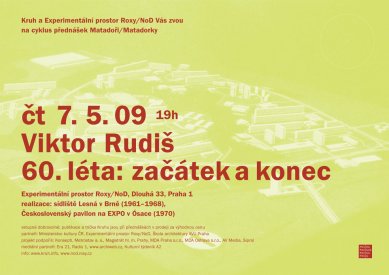
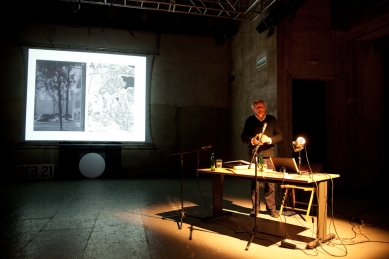
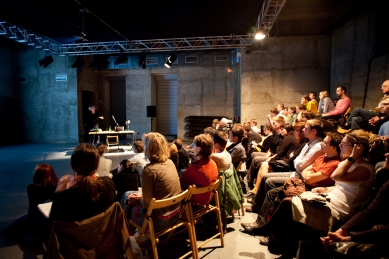
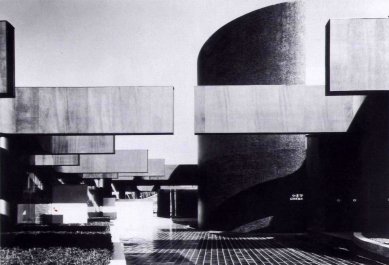
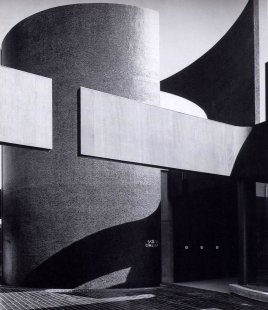
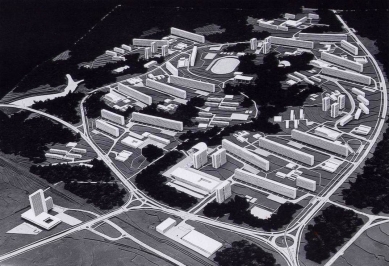
0 comments
add comment
Related articles
0
11.09.2014 | Minister Herman expressed support for the declaration of a heritage zone in Lesná
0
01.07.2009 | Ivo Oberstein: New Towns in Prague
0
01.06.2009 | Cycle Matadors/Matrons - Ivo Oberstein
0
27.04.2009 | Cycle Matadors/Matladoras - Viktor Rudiš
0
24.04.2009 | Buildings for Culture. Four Theatres by Ivo Klimeš
0
17.03.2009 | „Killers / Killers“ - lecture series of the Circle in spring 2009












